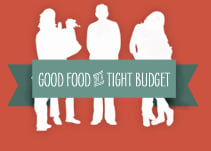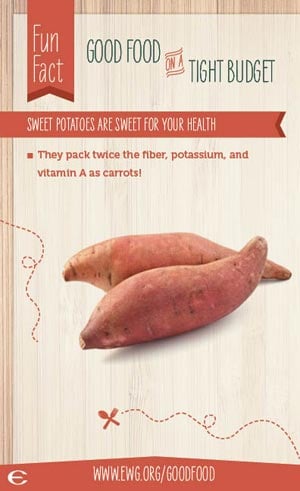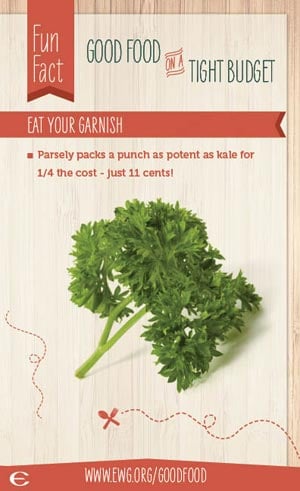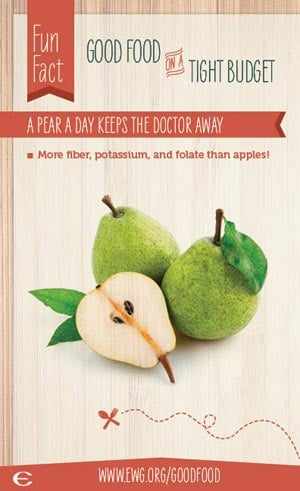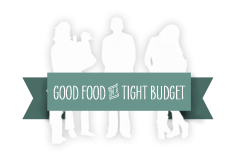
1. Plan and save.
Make a meal plan and shopping list. Use the food you have and the deals you find in store ads and coupons.
2. Add more fruits and vegetables to your meal plan.
Fill half your plate with fruits and vegetables. You can get your 5 to 9 servings of fruits and vegetables a day for about the cost of a bus ride in most cities.
3. Add beans and lentils to your meal plan.
Pick beans and lentils instead of meat for 2 or more dinners every week – lots of protein for less money (see recipes).
4. Skip processed foods like frozen pizza, cookies and soda.
They usually cost more than fresh, healthy food. Canned foods are convenient, but eat fresh or frozen when you can to lower your exposure to toxic chemicals.
At home

5. Cook and freeze large batches.
Save money by cooking at home more and eating out less. Store food properly and throw less away. (see recipes)
6. Grow your own.
You can buy seeds with SNAP dollars. You don't need a backyard, just some containers, a sunny window and a little soil. Community gardens are often free. Try cherry tomatoes and lettuce first. Check out www.snapgardens.org/snap-participant or ag.arizona.edu/pubs/garden/mg/vegetable/container.html
At the store

7. Stock up to save money.
Foods that last include rice, beans, cooking oil and frozen foods. Buy extra when they're on sale. Check unit prices – bigger packages are often cheaper. Buy from bulk containers if your store has them.
8. Spot bargains on fresh fruits and vegetables.
Use the price tracker to find good deals on fruits and vegetables. Fresh produce prices can drop when they're in season, and they taste best then.
9. Compare labels.
Healthier foods usually have less saturated fat, trans fat, salt (sodium) and sugar. Learn more about added sugar.
10. Look for deals at your farmers' market.
Some will give you $2 worth of produce for every $1 you spend. Find a market near you at search.ams.usda.gov/farmersmarkets or call Wholesome Wave at 203-226-1112.

